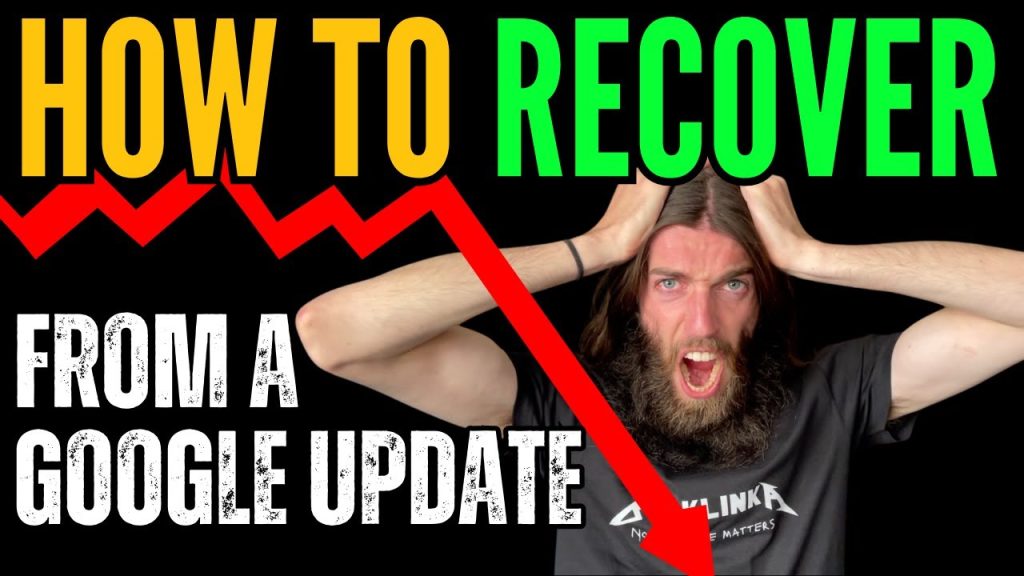Explore programmatic SEO strategies post-Google update. Learn how to adapt to changes, optimize content, and gain organic traffic with insights from SEO Jesus.
Table of Contents
ToggleThe recent Google update has significantly impacted AI-driven websites, particularly those employing mass content generation strategies.
I’ve received numerous inquiries from individuals and businesses concerned about mass AI websites ranking in different regions and localities after the update.
Generally speaking, the answer is ‘yes’ and I will explain why in this blog post.
As I have already shared on my YouTube channel and through discussions within the SEO community, it’s become evident that the March Google update has severely impacted mass AI websites that churn out hundreds or even thousands of articles weekly.
I shared an example of one of the websites just on the night before the update hit. I stumbled upon the site, and it was a pure ChatGPT website brimming with the typical AI footprints found across the web — featuring words like ‘dive into,’ delve into,’ etc.
I compiled a list of those notable words. For those interested, the compiled sheet is available for download on SEOJesus.com. Subscribers to my Ranking Revelations newsletter will find it in the welcome email.
Once the update hit, however, that website immediately ceased to exist. It went from having millions of page visits to being gone completely.
Many within the SEO community are now questioning the viability of AI SEO, especially for mass-page websites that rely on churning out thousands of articles every week.
The Impact of Google’s Update on Mass AI Websites
While Google’s recent update has indeed affected mass AI websites that churn out hundreds or thousands of articles weekly, it’s not a definitive “no” to using them.
Despite the penalties and de-indexing, there’s still hope for AI-driven sites through the adoption of smarter strategies and prioritizing quality content.
Websites that adopt that approach are likelier to stay afloat and continue to thrive even as SEO becomes more and more competitive.

Penalties and De-indexing of Mass AI Websites
The data leads to a clear conclusion: Google’s algorithm still grapples with effectively identifying these types of websites.
The majority of actions taken against them appear to be manual interventions by Google, rather than adjustments to the algorithm itself. Surprisingly, the presence of AI-generated content on a page doesn’t seem to be the primary issue.
I’m still holding strong at number three for cannabis SEO, showcasing real examples of AI-powered sites thriving in the field. Additionally, my LinkedIn article, created with ChatGPT, continues to draw in 450 visitors monthly.
I have numerous case studies from my portfolio and clients, demonstrating how smart AI content still ranks effectively. We refrain from using pure chatGPT and instead collaborate with SurferSEO to extract relevant keywords and meticulously craft SEO-optimized content.
Manual Actions vs. Algorithmic Changes: Understanding Google’s Method
When I discovered that plain ChatGPT sites ranked well, I decided to join the trend. However, the irony unfolded as the sites began disappearing shortly after. Yet, it’s important to note that Google’s actions against those sites were manual, not algorithmic.
A recent observation further supports the notion. A week-old site, devoid of link-building and indexing efforts, is already ranking for 18 keywords and purportedly receiving 106 visitors monthly.
While the keywords boast substantial search volume, they lack value, as evidenced by their absence of CPC value.
That reaffirms my preference for smaller, highly optimized websites with abundant backlinks, which allow for ranking on the most lucrative, commercially profitable terms. Consequently, myself and my clients have managed to weather the storm relatively unscathed.
The Viability of AI SEO Post-Update
Publishing hundreds of articles and ranking for 18 keywords within a week might not sound groundbreaking or exciting, but it indicates that the underlying algorithm hasn’t undergone significant changes concerning mass AI content.
So you may still continue creating mass AI sites. However, you should not abuse AI content by publishing hundreds or thousands of pages weekly. Instead, leverage a tool like autoblogging AI, which is more sophisticated than plain ChatGPT. That will likely result in nuanced articles, optimized, and well-structured – and of course, they’ll continue to rank without being shut down by Google.
Watch on the YouTube SEO Jesus channel: Mass Page Programmatic SEO Sites Are CRUSHING The Google Update
Case Study 1: Successful AI-Driven SEO Strategy
Let’s explore some exemplary examples of programmatic SEO for sites currently performing well. Surprisingly, Semrush stands out as a prime example. Over the past year, Semrush has been prolific in publishing programmatic pages, particularly listing individual websites.
For instance, there are 1.6 million searches per month in Malaysia for “score 808,” positioning Semrush at number eight for that term. Consequently, Semrush receives major organic search traffic, just by presenting indexed data on user-friendly pages like “Alternatives and Competitors,” where information is sourced directly from their extensive database.
If we focus keyword research tools almost solely on brand pages, it becomes apparent that Semrush is curating data from possibly thousands of websites, offering unique and value-added insights.
That actually aligns with Google’s emphasis on providing value rather than merely distinguishing between AI and non-AI content. Those stats provide hard, exclusive data, underscoring Semrush’s commitment to delivering unique insights at scale.
Traditionally programmatic SEO is literally about basically uploading a spreadsheet of data and presenting all that data. So when you’re doing Mass AI websites, think about adding something dynamic and unique into that overall architecture so that every page contributes something.
Case Study 2: An Income Tax Website
That leads us to another noteworthy example, possibly orchestrated by Fery Kaszone, renowned for digital PR expertise. They’ve developed a UK income tax website, focusing on niche queries such as “35k tax UK,” “30 after tax UK,” and “40K after tax UK.”
Tax-related queries are inherently complex, involving personal allowances and percentage calculations. It’s common for individuals to resort to Google for such inquiries. While it may be tempting to dismiss these niche keywords and automate content creation for search engines through auto-blogging, the webmasters here took a different approach.
With 700 pages of written content targeting various tax scenarios, one might assume a significant traffic boost. However, the tax website’s traffic remains relatively stagnant, unlike Semrush’s traffic surge which went from 11 million to 20 million within two weeks.
The tax website operates as a mass-page programmatic site, making it a target for algorithm updates. Nevertheless, it has maintained stability, indicating resilience against potential penalties.
Let’s explain what they did to manage that.
Magic Formula: Programmatic SEO +Constant Content Generation +Interactive Features
Upon closer inspection, the reason for the Income Tax website’s stability is dynamic content generation, followed by detailed breakdowns and calculators for tax-related queries.
Each page offers unique insights and valuable information, adhering to Google’s emphasis on content value. Therefore, despite the site’s mass-page structure, its ability to provide valuable, relevant content guarantees its continued visibility and the effectiveness of the programmatic SEO.
- The website presents a feature snippet, effectively answering the user’s query.
- There’s also an interactive calculator pre-populated with relevant data. The calculator offers a comprehensive breakdown, including national insurance and tax figures.
- Users will find detailed insights such as yearly gross and monthly net income, along with elements like a payslip simulator.
- The website’s content is dynamically user-generated and tailored to the user’s query and search intent, maintaining relevance and uniqueness.
- Furthermore, the website strategically incorporates internal linking, guiding users to related web pages, within the same tax bracket.
- Notably, it even provides hourly rate information, bettering the overall user experience.
In conclusion, the website’s impressive features, including interactive tools and in-depth content, contribute to its effectiveness and user engagement.
Case Study 3: Famous Birthdays
Another interesting example is the Famous Birthdays website which continues to perform well after the update. With 9 million visitors per month, it provides the birthdays of various celebrities and even ranks for plain celebrity names like Breckie Hill, positioned at number five with 515,000 searches per month.
The pages are not complicated, typically featuring details such as name, profession, birthday, star sign, birthplace, and age. They pretty much act as calculators, providing a synopsis and dynamic data.
So the key learning here is that if you include rankings and dynamic data from your website, rather than relying solely on plain AI content, your pages will stay fresh and unique, rather than just displaying AI content.
Case Study 4: BOAT International and its Focus on Luxury Goods
I’ve always been drawn to high-ticket items in SEO because it takes the same resources to sell an expensive product as it does a cheap one.
So, why are so many affiliates just selling lawnmowers on Amazon when they could be targeting more lucrative markets like real estate, luxury goods, and, in this case, super yachts and private jets?
So let’s have a look at BOAT International, which, ironically, sailed through the latest Google update with ease. Upon closer inspection, the site boasts 26,000 pages, which is not a massive volume of organic search, but likely associated with high-tickets.
The secret lies in their approach — they’ve built a database of thousands of pages of various yachts from around the world. The pages on BOAT International’s website are straightforward, containing names of yachts, owners, some data, and specifications. Obviously, the site works because Google sees it as informational enough and not just some random site filled with AI content and no unique information.

Final thoughts on the future of AI-driven SEO post-update
- Google’s algorithm is still grappling with detecting mass AI content, primarily resorting to manual actions rather than algorithmic updates.
- The value-added nature of content remains paramount, as emphasized by Google’s update. Websites offering unique insights and data are more likely to sustain their rankings.
- While mass AI sites face scrutiny, there are opportunities for websites that still want to keep using AI smartly and strategically.
So How Do You Grab This Opportunity?
- Focus on quality over quantity when it comes to content creation. Avoid the temptation to flood the digital space with articles and instead prioritize relevance and value.
- Use AI tools like auto blogging or similar platforms to streamline content generation processes, but ensure that each piece of content offers unique insights and data.
- Experiment with incorporating dynamic data and personalized experiences to increase user engagement and improve search visibility.
- Continuously monitor and adapt SEO strategies in response to algorithmic updates, emphasizing innovation and adaptability in AI-driven SEO approaches.
Step-by-Step of the Programmatic SEO: The SEO Jesus Proven Method

In my case, I’ve adopted a more measured approach, publishing a couple of hundred articles per week.
Here’s how it works:
- Each day, I log into my dashboard where I have all my scheduled posts from Autoblogging.ai.
- I selectively publish around 50 posts each day.
- Repeat the process daily to maintain an aggressive yet balanced approach.
- Publish 30 to 50 posts daily to align with the standards of a professional editorial newsroom or a robust blog.
- Use Autoblog or a similar tool instead of plain ChatGPT for content generation.
- Focus on incorporating unique insights and data into the content.
- I aim for 10 to 20% extra effort to add uniqueness and deliver high-quality content that goes beyond the basics.
- Content that adds genuine value is more likely to be recognized, favored by search algorithms, and avoid Google’s penalty.
Need help in recovering previous glory (traffic)?
Check out our affordable packages if your budget is below $1000.
If you plan to rank fast and dominate your niche, subscribe to our SEO services.



